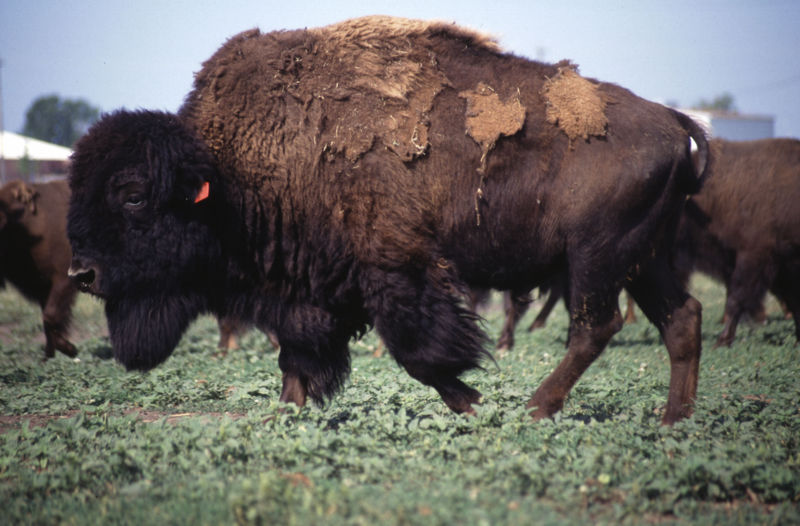Brucellosis pathophysiology
|
Brucellosis Microchapters |
|
Diagnosis |
|---|
|
Treatment |
|
Case Studies |
|
Brucellosis pathophysiology On the Web |
|
American Roentgen Ray Society Images of Brucellosis pathophysiology |
|
Risk calculators and risk factors for Brucellosis pathophysiology |
Editor-In-Chief: C. Michael Gibson, M.S., M.D. [1]; Associate Editor(s)-in-Chief: Raviteja Guddeti, M.B.B.S. [2]
Pathophysiology
- Brucella spp. are primarily passed among animals, and they cause disease in many different vertebrates.
- Various Brucella species affect sheep, goats, cattle, deer, elk, pigs, dogs, and several other animals.
- Humans are generally infected in one of three ways:
- Eating undercooked meat or consuming unpasteurized/raw dairy products
- The most common way to be infected is by eating or drinking unpasteurized/raw dairy products.
- When sheep, goats, cows, or camels are infected, their milk becomes contaminated with the bacteria.
- If the milk from infected animals is not pasteurized, the infection will be transmitted to people who consume the milk and/or cheese products.
- Breathing in the bacteria that cause brucellosis (inhalation)
- This risk is generally greater for people in laboratories that work with the bacteria.
- Slaughterhouse and meat-packing employees have also been known to be exposed to the bacteria and ultimately become infected.
- Bacteria entering the body through skin wounds or mucous membranes
- Bacteria can also enter wounds in the skin/mucous membranes through contact with infected animals.
- This poses a problem for workers who have close contact with animals or animal excretions (newborn animals, fetuses, and excretions that may result from birth).
- Such workers may include:
- Slaughterhouse workers
- Meat-packing plant employees
- Veterinarians
- Eating undercooked meat or consuming unpasteurized/raw dairy products
- Person-to-person spread of brucellosis is extremely rare.
- Infected mothers who are breast-feeding may transmit the infection to their infants.
- Sexual transmission has been rarely reported.
- While uncommon, transmission may also occur via tissue transplantation or blood transfusions.
Transmission and Incubation

- The disease is transmitted either through contaminated or untreated milk (and its derivates) or through direct contact with infected animals, which may include dogs, pigs, camels and ruminants, primarily sheep, goats, cattle, American Bison. This also includes contact with their carcasses. Parturition rests are extremely rich in highy virulent brucellae . Brucellae, along with leptospira have the unique property of penetrate through intact human skin, so infection by mere hand contact with infectious material is likely to occur.
The disease is now usually associated with the consumption of unpasteurized milk and soft cheeses made from the milk of infected animals and with occupational exposures of veterinarians and slaughterhouse workers. Some vaccines used in livestock, most notably B. abortus strain 19 also cause disease in humans if accidentally injected. Problems with vaccine induced cases in the United States declined after the release of the RB-51 strain developed in the 1990s and the relaxation of laws requiring vaccination of cattle in many states.
The incubation period of brucellosis is, usually, of one to three weeks, but some rare instances may take several months to surface.
In the first stage of the disease, septicaemia occurs and leads to the classic triad of undulant fevers, sweating (often with characteristic smell, likened to wet hay) and migratory arthralgia and myalgia. In blood tests, is characteristic the leukopenia and anemia, some elevation of AST and ALT and positivity of classic Bengal Rose and Huddleson reactions. This complex is, at least in Portugal known as the Malta fever. During episodes of Malta fever, melitococcemia (presence of brucellae in blood) can usually be demonstrated by means of blood culture in tryptose medium or Albini medium. If untreated, the disease can give origin to focalizations or become chronic. The focalizations of brucellosis occur usually in bones and joints and spondylodisciitis of lumbar spine accompanied by sacroiliitis is very characteristic of this disease. Orchitis is also frequent in men.